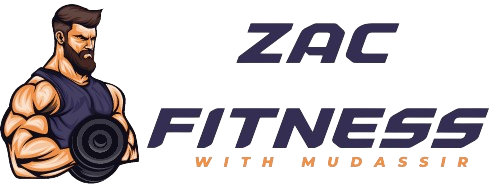In today’s busy world, finding time to maintain a regular fitness routine can be a challenge. Between work, family, and other commitments, squeezing in an hour-long workout every day may seem impossible. But what if I told you that your exercise routine doesn’t have to be long to be effective? You can stay fit and healthy with less time by making some smart adjustments to your workouts. This article will guide you on how to cut down your exercise routine while still achieving your fitness goals.
Why You Don’t Need Long Workouts to Stay Fit
Many people believe that spending hours at the gym is the only way to get fit. However, the truth is, you don’t need lengthy workouts to see results. In fact, shorter, more intense sessions can be just as effective—if not more so. The key is focusing on the quality of your exercise routine rather than the quantity.
Studies have shown that high-intensity, short-duration workouts can help burn fat, build muscle, and improve cardiovascular health just as effectively as longer workouts. So, instead of thinking you need to dedicate an hour or more to exercise, you can get great results in 20-30 minutes with the right approach.
The Benefits of Shorter Exercise Routines
Cutting down your exercise routine has numerous benefits. For one, shorter workouts are more manageable, making it easier to stay consistent. You won’t feel overwhelmed by the idea of spending hours at the gym, which often leads to burnout. Additionally, less time spent working out means more time for other important activities in your life.
Another key benefit is the reduced stress. When you don’t have to worry about fitting in long workouts, exercise becomes less of a burden and more of a pleasure. Plus, shorter sessions are easier to schedule into your day, making it less likely you’ll skip a workout.
Understanding High-Intensity Interval Training (HIIT)
One of the most efficient ways to cut down your exercise routine is by incorporating High-Intensity Interval Training (HIIT). HIIT alternates brief intervals of high-intensity training with rest intervals. The idea is to push your body hard for a short amount of time, which boosts your metabolism and burns fat even after your workout is over.
The beauty of HIIT is that it can be done in as little as 20 minutes. For example, you could do a simple routine of 30 seconds of sprinting followed by 30 seconds of walking, repeated for 20 minutes. The high intensity of these short intervals makes it one of the most effective ways to work out with limited time.

The Importance of Functional Training
Functional training focuses on exercises that mimic movements you use in everyday life, such as lifting, bending, and twisting. These exercises help improve your strength, balance, and flexibility, all while reducing the time needed for a workout. Functional exercises, like squats, lunges, and push-ups, engage multiple muscle groups at once, making them highly efficient.
Incorporating functional training into your exercise routine not only saves time but also makes your body stronger for daily activities. These exercises require little to no equipment, which makes it easy to fit them into a short, at-home workout.
Leveraging Bodyweight Exercises for Quick Workouts
Another great way to shorten your exercise routine is by using bodyweight exercises. Bodyweight exercises, such as push-ups, squats, and planks, are highly effective at building strength and endurance without the need for equipment. This makes them convenient and perfect for quick, on-the-go workouts.
You can do a full-body workout in as little as 15 minutes using bodyweight exercises. Here’s a sample routine you can try:
- Push-ups (1 minute)
- Squats (1 minute)
- Planks (1 minute)
- Lunges (1 minute)
- Mountain Climbers (1 minute)
Repeat this circuit three times for a fast and effective 15-minute workout.
The Role of Strength Training in Shorter Routines
Strength training doesn’t have to take hours at the gym. In fact, with the right exercises, you can get a great strength workout in 30 minutes or less. Strength training increases muscle mass, which boosts your metabolism and helps you burn more calories throughout the day, even when you’re not working out.
Focus on compound movements that target multiple muscles at once, such as deadlifts, squats, and bench presses. These exercises are highly efficient and allow you to work several muscle groups in one session, cutting down the time spent on your exercise routine while still providing great results.
Focusing on Compound Movements
Exercises known as compound motions target several muscular groups simultaneously. These include movements like squats, lunges, push-ups, and deadlifts. Because compound exercises engage several muscles, they allow you to get more done in less time, making them perfect for shorter workouts.
For example, a squat engages your legs, core, and lower back, while a push-up works your chest, arms, and shoulders. By focusing on compound movements, you can significantly reduce your exercise routine without sacrificing effectiveness.
Incorporating Active Recovery on Non-Workout Days
Active recovery refers to engaging in light physical activities on your rest days, which helps your body recover faster while keeping you moving. Activities such as walking, stretching, or light yoga are great examples of active recovery. This approach ensures that even on your non-workout days, you’re still benefiting from physical activity.
Incorporating active recovery into your exercise routine will help prevent injuries and improve your overall fitness, all while giving your muscles the time they need to repair and grow.
The Importance of Stretching and Mobility Work
Flexibility and mobility are often overlooked aspects of fitness, but they are crucial to maintaining a healthy body, especially as you get older. Adding 5-10 minutes of stretching and mobility exercises to your exercise routine can help improve your flexibility, reduce the risk of injury, and enhance your overall performance.
By spending just a few minutes a day stretching, you can improve your range of motion, making it easier to perform exercises and everyday activities.
Adapting to Your Body’s Needs and Listening to Cues
It’s important to listen to your body when it comes to exercise. If you’re feeling fatigued or sore, it may be a sign that you need to take a break or scale back the intensity of your workouts. On the other hand, if you’re feeling strong and energized, you may be able to push yourself harder.
When you cut down your exercise routine, it becomes even more crucial to pay attention to your body’s signals. This balance between effort and recovery ensures you don’t overtrain or injure yourself.
Time-Saving Tips for Fitting Exercise into a Busy Schedule
Finding time for exercise doesn’t mean you have to overhaul your schedule. There are simple, effective ways to fit quick workouts into your day:
- Workout during lunch breaks: Take 20 minutes during lunch to do a quick HIIT or bodyweight workout.
- Incorporate movement into daily tasks: Take the stairs instead of the elevator or walk during phone calls.
- Wake up 15 minutes earlier: A short workout first thing in the morning can set the tone for a productive day.
By making small adjustments, you can easily fit your exercise routine into your day, even when you’re busy.
The Importance of Consistency Over Perfection
The key to staying fit isn’t about having a perfect workout routine; it’s about staying consistent. A shorter, more regular exercise routine will always outperform sporadic, longer workouts. Even if you only have 15 minutes a day, doing something is better than doing nothing.
Remember, consistency in your exercise routine will yield long-term results. The compound effect of small, consistent efforts adds up over time.
Balancing Fitness with Proper Nutrition
Shortening your exercise routine doesn’t mean you can ignore nutrition. In fact, diet plays a crucial role in helping you stay fit. Focus on eating whole, nutrient-dense foods that fuel your body and aid in recovery. This includes lean proteins, fruits, vegetables, and healthy fats.
Proper hydration and enough sleep are also essential in supporting a shorter workout routine and maintaining overall health.
FAQs
How many days a week should I work out if I’m doing shorter routines?
Can I lose weight with just 15-20 minutes of exercise a day?
What’s the best type of workout if I only have 10 minutes?
How can I stay motivated with shorter workout sessions?
Should I combine different workout styles (HIIT, strength, functional) in a week?
Read more: 10 Secrets to Supercharging Your Workouts at VASA Fitness
Conclusion
Cutting down your exercise routine doesn’t mean compromising on your fitness goals. By focusing on intensity, efficiency, and consistency, you can stay fit and healthy with less time spent working out. Incorporate strategies like HIIT, functional training, and bodyweight exercises to maximize your results in minimal time. Remember, it’s not about how long you work out—it’s about making every minute count.
